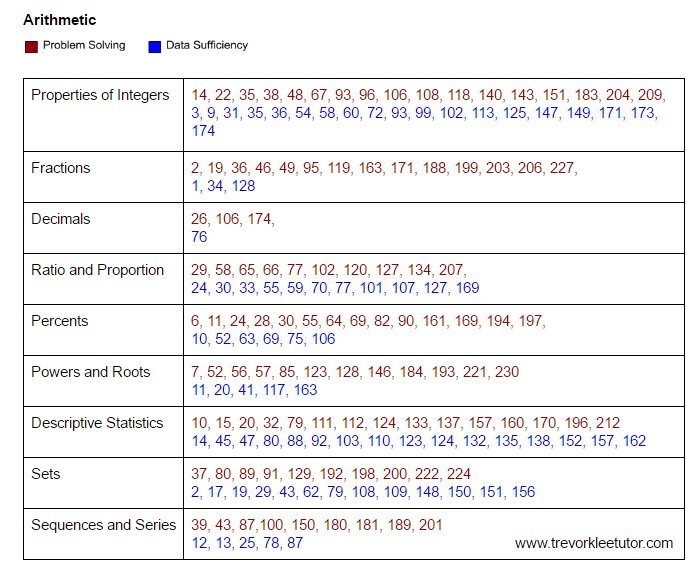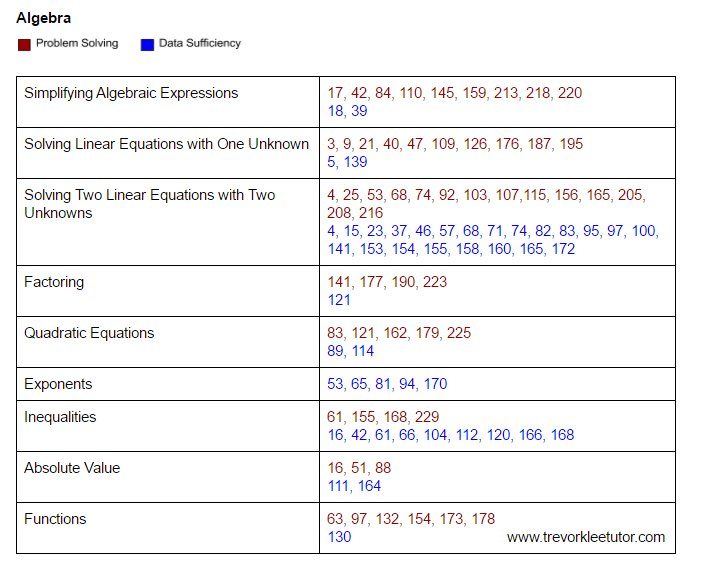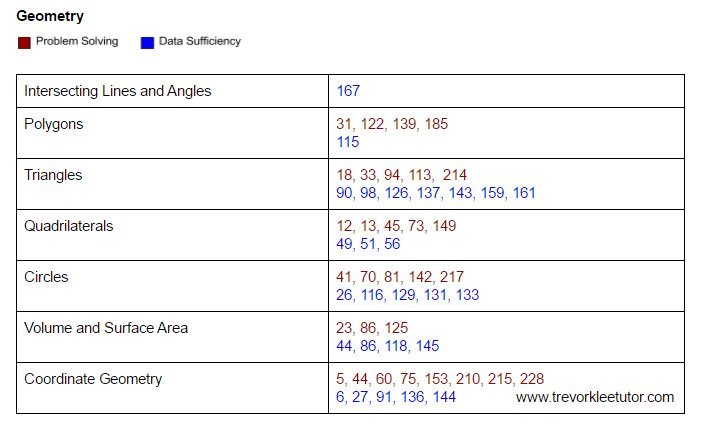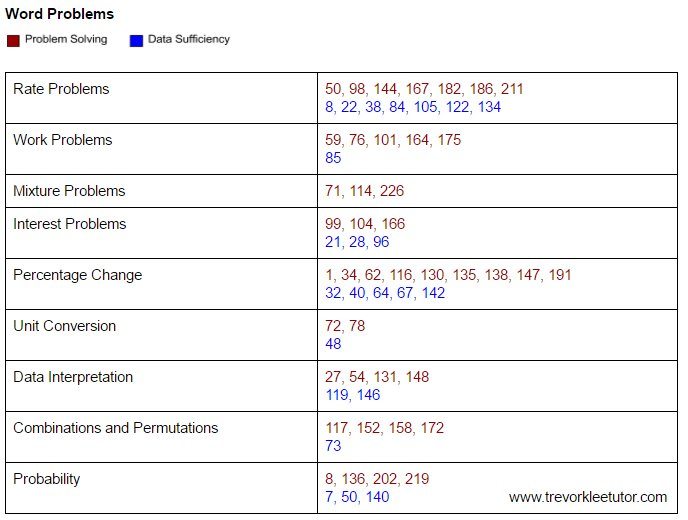(Or as the SEO friendly title: How do I get a perfect quant score on the GMAT without spending any money on classes, tutoring, or books?)
UPDATE: I’ve recently created a Google Sheet with all the questions from the Official Guide 2018 in error log format. Enjoy!
Before you read the charts
If you haven’t yet started studying for the GMAT, the first thing you should do is take the diagnostic test from the Official Guide 2016. It’ll give you an idea of your strengths and weaknesses, which will make using the charts to review a lot easier. If you don’t have the OG, send me an email and I’ll send you the diagnostic tests.
Once you take the diagnostic tests, send me your results, one result per cell, one column per section. I can send you back a detailed breakdown of your answers, as I have all the questions coded up. Then you’ll know what you need to focus on.
The Charts




Notes
- I put every problem into only one category, based on the main category the problem fell into. I did this to avoid redundancies, so that any schedule you set up for yourself will be as clean and efficient as possible, without undue repetition. The smaller categories are mostly unaffected, but the larger categories are lacking some problems which could have fallen into them.
- Some categories became catchalls of necessity, like Properties of Integers and Solving Linear Equations with Two Unknowns. Therefore, there’s more diversity in these categories than there are in others.
- The categories are not identical to the OG 2016’s categorization, as some of the OG’s categories are obviously wrong, while others just aren’t that useful.
How to review
First of all, useful links:
All the OG Verbal 2016 Questions
All the OG Quant 2016 Questions
The verbal link also includes categorizations and difficulty levels of questions, which you may find useful.
First of all, you’re going to want to set up a chart in a similar vein to the one below, which was created by a student of mine. Focus on the weaknesses revealed by the diagnostic test, but make sure to include at least one or two hard questions in your strong sections as well. The diagnostic test can’t cover everything, and it’s possible you’re missing a crucial detail in a certain type of problem. Generally speaking, the later questions are harder than the earlier questions, so your review should focus on the questions towards the end.
![]()
One thing you’ll notice that’s unique about the chart below is the frequency of the review for each question. I believe that repeatedly reviewing questions that you got wrong over a period of time is the single best way to learn. Continually doing new problems and expecting to improve is like trying to learn a new language by never saying the same sentence twice. It’s an exhausting way to learn poorly. You can find more about that philosophy here, or email me for a free study guide, in which I elaborate more about how to study for the GMAT.
Explanations
If you want strategies for how to solve the different sorts of problems, as well as simple, clear explanations for the most difficult problems, consider purchasing my Clear, Simple Guides to the GMAT. They’re clearer, simpler, better, and cheaper (choose-your-own-price model) than anything else on the market.
About me
My name’s Trevor Klee. I’m a GMAT, GRE, and LSAT tutor based out of Boston, although I do most of my work remotely. I have top scores in all the exams I teach (including a 750 on the GMAT), a 5 star rating on Google, and I’m currently the official GRE instructor for MIT.
I’m currently accepting new clients, so, if the GMAT’s giving you difficulty, contact me! I do most of my tutoring remotely, so I can help you wherever you are.
Pingback: How accurate are Kaplan CATs? Manhattan CATs? Veritas? | Trevor Klee, Tutor